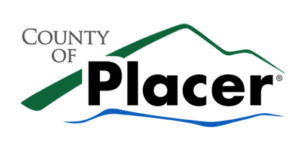 Pointing to Placer County’s success at flattening the COVID-19 curve and the proactive efforts of the local business community to prepare for safely reopening, the county Board of Supervisors today unanimously approved a resolution to request permission from the state to move into Stage 3 of California’s reopening roadmap.
Pointing to Placer County’s success at flattening the COVID-19 curve and the proactive efforts of the local business community to prepare for safely reopening, the county Board of Supervisors today unanimously approved a resolution to request permission from the state to move into Stage 3 of California’s reopening roadmap.
On May 12, Placer County became one of the first counties in the state to receive a variance to move more quickly than the state through Stage 2. Today’s resolution follows a similar proposal approved by the San Diego County Board of Supervisors on May 19.
“We hear both sides of this issue and people are very passionate about it,” said Board Chair and District 1 Supervisor Bonnie Gore. “We are concerned about protecting the most vulnerable. That’s what we’ve been doing now for the past two and a half months. However, there is also a balance between protecting human life and protecting the other parts of life that are important – the economic and mental health of our residents. As we open up, we anticipate a spike will happen. The good news is that we’re well prepared to address those surges. As we move forward, we all have to continue being kind to one another and taking precautions to keep one another safe.”
Since the COVID-19 crisis began, the county has worked closely with Placer’s cities, chambers of commerce and other business groups to advise and educate businesses on the need for strict adherence to state reopening guidelines, including producing its own materials for future-stage businesses to prepare for reopening based on the state guidance issued to date.
The resolution asks for the state to allow reopening of Stage 3 businesses in Placer County such as nail salons, gyms, lodging for tourism and entertainment venues – with adaptations and limits on size of gatherings. It also requests that youth sports and programs be allowed to resume.
Acknowledging the significance of the summer season for Placer’s tourism-based economy in eastern Placer County, the resolution asks for specific flexibility to reopen for tourism no later than June 1 and for the state to provide reopening guidance for the industry.
“Businesses have taken dramatic cuts. They’re just trying to keep employees to help pay their bills and put food on the table for their families,” said District 5 Supervisor Cindy Gustafson. “I’m not supporting this because of economic gains or county revenues. This is about community members who are dramatically suffering. Some of our small business people are losing everything they’ve worked their whole lives for.”
California Governor Gavin Newsom announced May 25 that the state would allow in-person church services limited to 100 people or 25% of capacity, whichever is smaller, upon approval by the local health department, which Placer’s health officer has provided. The resolution requests even more flexibility for church services, The resolution requests even more flexibility for church services, seeking to eliminate the 100-person attendance limit.
The resolution further requests the state to release the estimated $40 million the county expects to receive in funding provided through the federal CARES Act to reimburse local agencies for certain costs of their COVID-19 responses.
In a related item, the board approved a study of Placer’s local COVID-19 infection rate to move forward. The seroprevalence study would investigate how many residents have been infected with COVID-19 by testing for antibodies in a representative pool of volunteer residents, which could provide better insight into the county’s overall COVID-19 infection and mortality rates.
Though the board approved a cost of up to $250,000, the study is not expected to come at any net expense to the county; with $150,000 anticipated to come from CARES Act funding, health insurance providers paying for individual tests and additional funding expected from other potential community partners.
“We started with no infections, and we’re headed for herd immunity, or some semblance of it,” said District 2 Supervisor Robert Weygandt. “Understanding where we are now in the process is essential information to inform the many more policy decisions we’ll have to make as we continue to deal with the disease in the coming months.”





